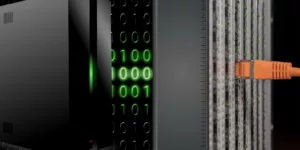AMD’s historic place in the microprocessor ecosystem is as a second source for Intel. Some of AMD’s biggest problems have resulted from its being unwilling to remain second tier and Intel’s understandable reluctance to allow it to rise to peer level. AMD’s prior push to rise to peer status in the early 2000s ended badly because of AMD execution issues and Intel moving aggressively to prevent a favorable AMD outcome.
However, AMD has significantly improved its leadership (according to Mercury Research) and execution over time, while Intel’s prior CEO defunded much of Intel’s microprocessing efforts in what seemed to be a misguided though initially successful strategy to increase short-term profitability at the expense of long-term viability. Pat Gelsinger, who is arguably the only person on the planet capable of turning Intel around, is struggling to do so, so the latest announcements of layoffs and salary cuts suggest it still isn’t going well.
The latest Microprocessor Report from Mercury Research indicates that AMD has been able to maintain and build on 25% market share for a sustained period. This means that, regardless of short-term events like the pandemic, AMD has demonstrated it can both take share and hold it, moving it from Intel subordinate to Intel peer. This is an impressive piece of work by AMD’s CEO Lisa Su and her core team, including folks like Victor Peng, Rick Bergman, Mark Papermaster, and Forrest Norrod.
Workstation wakeup call
I think it is interesting to note that AMD’s competitive performance, while powerful in servers, was first most noticeable in workstations. What I find particularly fascinating is that with Threadripper, which initially was just kind of a performance experiment in the consumer space, became the must-have part for high-performance workstations almost overnight and allowed Lenovo to take the undisputed leadership in this segment, forcing Dell, which is far more tightly tied to Intel, to follow them to hold onto its remaining share.
What I still find fascinating is that it was NVIDIA with its RTX 4090 part that executed a similar strategy with graphics, but that didn’t impact its workstation business, and AMD hasn’t done something similar on the graphics side. This suggests there is a missed opportunity that either vendor may eventually embrace.
Game console advantage
When AMD moved into and dominated the PlayStation and Xbox segments, folks looked at the move as non-strategic and unimportant to the business side of the business. However, what those folks didn’t realize is that AMD’s resulting ability to better collaborate with Sony and Microsoft on these projects showcased not only one of AMD’s unique advantages (collaboration), but its ability to advance this collaboration capability to a degree that AMD became a favored vendor in the Cloud market which was becoming a huge threat to the then status quo of on-premise computing.
This cloud focus allowed the company to gain skills and understanding on the emerging hybrid-cloud market opportunities and better tune its products and related messaging for the market while Intel was still trying to work out where its focus should be and struggling with the past mistakes of prior leadership.
In other words, AMD’s success is the result not only of excellent execution but of Intel’s severe missteps in preserving its market advantages. This past week, we saw a similar dynamic between Microsoft and Google because of Microsoft’s surprise introduction of ChatGPT into Bing.
Much like Google’s recent mistake, Intel’s then leadership took its eye off the markets it dominated, putting that dominance at risk and allowing a more focused competitor to not only gain a strong beachhead but the ability to defend and grow it.
Wrapping up:
There are several lessons here. AMD’s is that if you operate strategically, stay focused, and build on your strengths rather than just emulating the market leader, the odds favor your eventual success. The lesson from Intel’s side is that you need to stay focused and adequately fund markets you dominate. Otherwise, you’ll put that dominance at risk, particularly if you have a competitor who remains focused when you are not.
Looking back, one of the reasons AMD didn’t pass Intel during its last attempt is that it tried to chase Intel into mobile rather than focusing on its unique strengths and using them to move on Intel’s weakened segments. The reason it’s successful this time is that it didn’t chase things like IoT and drone swarms or taking out Qualcomm. Instead, it focused on its core markets, allowing it to execute on the opportunities that Intel’s distractions created.
Intel’s move to layoffs and salary reductions will significantly lower its ability to execute near term and likely provide additional opportunities for AMD to advance. And AMD’s leadership team appears more than capable of exploiting that advantage. Ironically, this may turn out to be good for Intel since part of the cause of its problems is a lack of focus on its core markets due to AMD’s historic inability to become a peer competitor. Well, that has changed. Going forward, AMD’s success should help keep Intel focused on its core markets.
It’s going to be a fascinating decade.








